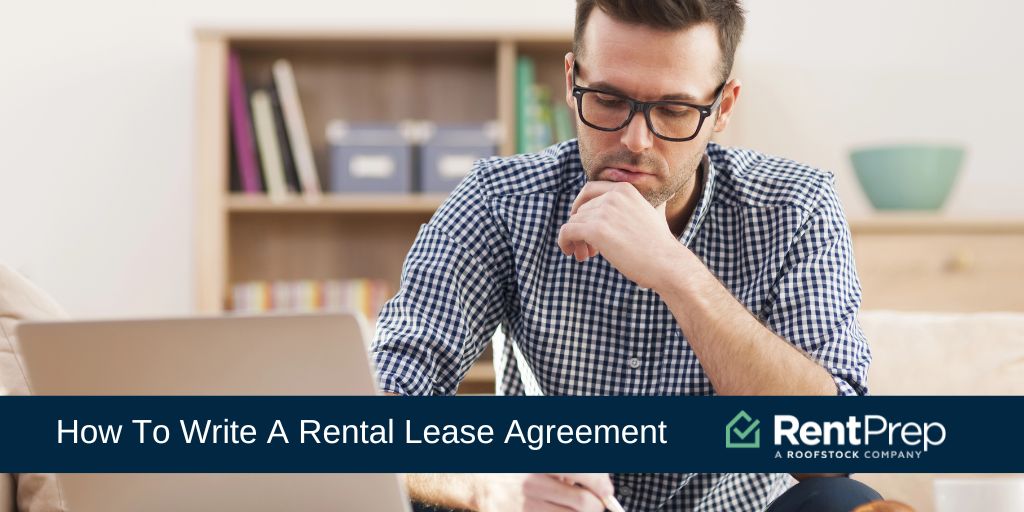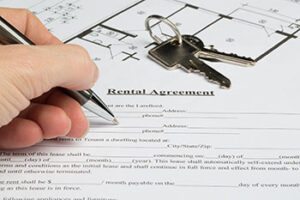
No matter how much experience you have in the rental industry, you must remember the rental lease agreement is the backbone of your business. This agreement between you and your tenants sets the standard for how the rental period will pass.
What dates will the rental period cover? What are the rules for using the property? All of this and much more needs to be covered in a rental property lease agreement. If you forget to add something, you cannot simply add it later without coming to a new agreement with the tenant.
While some states have sample leases to review, it is up to you to set up the right rental agreement for your properties. The best way to do this is to start with a rental agreement form sample and then build out your own version. However, writing a lease from scratch is hard!
Today, we’ll share our rental lease agreement form and explain how to adapt it to suit your needs.
A Table Of Contents For Rental Lease Agreement Forms
- What Is A Rental Lease Agreement?
- What Is The Difference Between A Lease And A Rental Agreement?
- Why You Need A Strong Rental Agreement
- Sample Rental Lease Agreement Form
What Is A Rental Lease Agreement?

If you were to try to define a lease agreement, what would you say? How would you describe this contract between you and a tenant?
The rental lease is the document that sets out the specific terms, conditions, and clauses that will apply during the rental occupation by a tenant of a property owned by a landlord.
Put more simply, this is the legal document that solidifies the rights and responsibilities of both parties involved in a rental agreement: the tenant and the landlord.
What Is The Difference Between A Lease And A Rental Agreement?
As you’ve probably noticed during your time in the rental industry, the terms rental agreement and rental lease are used in very similar ways. Do they mean the same thing?
Technically speaking, rental agreements are typically month-to-month leases that auto-renew until one of the parties terminates the contract. The term lease is more commonly used for long-term rental periods. While a lease can be renewed or resigned when it ends, it is often allowed to roll over into a month-to-month rental agreement.
Logistically speaking, however, both documents contain nearly identical information as both are covering the rights and responsibilities of the parties involved. There are, of course, going to be differences in the occupation dates, but the core structure of the agreement and lease are the same.
For that reason, you can use the same base to build both your month-to-month rental agreements and long-term lease agreements.
Why You Need A Strong Rental Lease Agreement
The rental agreement you will sign with your tenants is a legal, binding contract. The terms and conditions you agree to will be in effect until the contract is ended or modified by both parties.
That means if you forget to include anything in the agreement or rely on certain things being agreed to verbally, you won’t have a record of that agreement. Should there be a problem between you and the tenant, it will be very hard to prove anything not included in the lease.
The lease functions not only as a guide for how both parties should act during the rental period but also as proof should any disagreements occur. The court can use this agreement to determine what went wrong, and having a thorough rental agreement in place is always a good thing.
Don’t Break The Law
Our sample agreement covers the standard items that should be included in every lease agreement, but it might not be the perfect agreement for your needs.
In particular, you need to be aware of the laws in effect in your city and state that may affect what can and cannot be included in a lease agreement. Landlord-tenant laws differ from state to state, so you want to be sure your lease agreement fits your local rules.
Sample Rental Lease Agreement Template
Now that you’ve got a grasp of what typically is included in a rental lease agreement form, let’s work through our sample form together:
| Rental Lease Agreement Form |
We will break down each clause. By gaining an understanding of what usually goes in each section, you can see where changes can be made for your rental business as needed.
Here are three of the top things to include in your next rental agreement:
Introduction
The introduction of the lease will clarify who is involved in the agreement and how they will be referred to in the rest of the lease (i.e., tenant, landlord).
Basic Terms
The first clause gives an overview of all of the basic terms of the agreement:
- How much rent is
- What day of the month it is due
- Dates of tenancy
- What type of agreement it is (long-term or month-to-month)
This section is important for setting up the context of the rest of the agreement while also covering the essentials at the very beginning of the document.
How To Get Paid

Sections two to four cover money matters. Section two explains how rent should be paid and who it should be paid to. This is important so the tenant knows exactly how to pay their rent.
Section three explains how the security deposit will be held and under what conditions it will be returned. As the security deposit is not money you can keep, it is essential to alert the tenant about how it will be handled.
Section four explains what late charge, if any, will be applied to late rent and when it will apply. This late charge must fit your state’s rules. This must be included in the lease; you may not charge a lease if it is not included.
Utilities
The next section identifies who is in charge of paying for the utilities. If any utilities are included with rent or covered by you, that should be listed here. This is important to prevent any missing utility payments.
Occupants & Pets
These next two sections cover who can stay at the property: people and animals included!
This section prevents the tenant from allowing guests or roommates to move in long term without your permission. This is very important to prevent anyone from crowding the space or using it in a way that is not in alignment with your agreement.
Any additional pet rent and pet deposit are also detailed here, and any other rules about pets can be included.
Liquid Filled Furnishings
This clause forbids liquid-filled furnishings; these are very risky to have as they can cause substantial property damage. If the tenant wants to have a water bed or similar furniture, they must get permission.
Parking
Any parking that is available at the property can be detailed here, as well as any additional costs for parking. Parking should be explained thoroughly, especially if you live somewhere with limited parking, as this can be a major cause of disagreement.
Noise
In the noise section, tenants are reminded they cannot impede on the neighbors’ right to enjoy their homes. Noise that disturbs the peace of the neighbors will be considered a breach of the agreement.
Condition Of Premises
If the tenant causes substantial damage to the property, the rental agreement can be terminated with three days’ notice. This section is incredibly important to protect your investment and your property, so it must be included.
This section should do ensure:
- Both parties agree property is in good condition at start of tenancy
- What the tenant is responsible for maintaining is outlined
- Tenants cannot make alterations without permission
Property Maintenance & House Rules
The lease delineates what the tenant is responsible for in terms of maintenance:
- Placing garbage where it is picked up
- Removing large garbage from the property if it is not picked up
- Keeping drains from clogging
Tenants may not understand that these things are their responsibility, so it is important to make that clear in the lease to prevent misunderstandings.
In the same vein, the lease also leaves the opportunity to reference a house rules addendum, as needed. The rules in any included addendums must be followed alongside the lease.
Change Of Terms, Termination, And Property Possession
These sections detail how the lease will end, what will happen if the lease is ended early, and what will happen if the tenant refuses to leave.
As these are the clauses that are most likely to be challenged in a court, it is essential to make sure they are ironclad and accurate. Review the details of these sections, and modify them to fit your rental business as needed.
Additional Sections
The remaining sections of the lease cover important, but less lengthy, information. Let’s quickly review what else you can be sure you should have in your standard lease:
- Insurance: Owner’s insurance doesn’t cover tenant belongings; they must have their own
- Entry & Inspection: Outlines when and why you may enter the property
- Subletting: Tenant may not sublet
- Partial Invalidity: Agreement remains valid even if some sections are rendered invalid
- Notices: Where notices will be served, as needed
- Inventory: What items are included for use with the premises
- Keys and Addendums: Number of granted keys and applicable addendums
- Signatures: Agreement of both parties to the entire lease
Keep Your Properties In Line
With the right rental lease agreement, you can ensure your rental properties are being as well looked after as possible. While it might seem excessive to include so much in your standard lease agreement, it is very important.
Having a strong lease agreement ensures:
- Your tenant is aware of what they are responsible for
- Both you and your tenant are aware of your rights and responsibilities
- You have a recorded agreement of what both parties signed off on
No landlord wants to assume that things will go wrong during a rental, but there is always that possibility. Ensure your lease is ironclad using our sample lease agreement form, and you’ll be in a better position should that annoyance occur.

